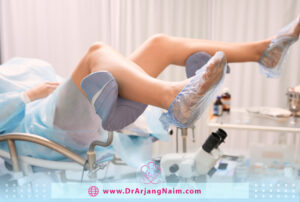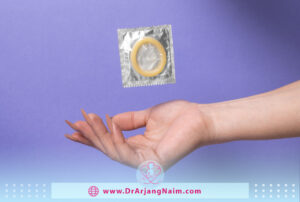A Bartholin’s cyst occurs when the Bartholin’s gland is blocked in the vagina. This blockage creates a lump that can cause irritation and pain when walking, sitting, or having sex. Bartholin’s cyst resolves on its own over time. If it becomes infected, it may need to be treated by a healthcare provider.
What is a Bartholin cyst?
Bartholin’s cyst (or vulvar cyst) is a type of vaginal cyst that occurs on both sides of the labia (vaginal lips) near the opening of the vagina. It gets its name from Bartholin’s glands, two small glands that produce a fluid (mucus) that helps lubricate the vagina. The labia and Bartholin’s glands are part of the vulva in the female reproductive system.
Bartholin’s cyst occurs when there is a blockage in the opening of one of these glands, causing mucus and mass formation. It usually occurs in only one of the two Bartholin glands. Some Bartholin’s cysts are small and do not cause any pain. If the cyst becomes infected with bacteria, an abscess forms. Bartholin’s cysts can be painful if infected and may require medical treatment.

Symptoms
Bartholin’s cyst does not always cause pain. A person may have a cyst and not be aware of it until undergoing a routine examination by a doctor.
The main symptoms are not common. However, when symptoms do appear, they may include a mild lump in the labia. A cyst usually develops in only one of these two glands. Cysts may not be noticeable at first, but sometimes they can affect the lips and cause one lip to be larger than the other.
Cysts can range from the size of a lentil to a golf ball. Although Bartholin’s cysts cannot be transmitted from person to person through sexual contact, gonorrhea or chlamydia may be an underlying cause.
Larger cysts are more likely to cause discomfort and pain in the vulva, especially during intercourse, walking, or sitting.
Complications
Sometimes, bacteria can enter the cyst fluid and cause a buildup of pus in the form of a Bartholin’s abscess. This abscess can be painful. The doctor may prescribe broad-spectrum antibiotics to counteract the action of the infectious agent that causes the accumulation of pus. Abscesses can develop quickly. A person may notice the following symptoms in the area around the abscess:
- Tenderness
- Redness
- A sensation of heat from the area
- Pain during sexual activity
- Rupturing and leakage
- Fever
Who gets Bartholin’s cyst?
Bartholin’s cyst occurs in about 2% of women at some point. It is more common in women of reproductive age. Bartholin’s cysts are less likely to develop after menopause.
Causes
Bartholin’s glands produce a lubricating fluid that helps reduce friction during intercourse. This fluid moves from Bartholin’s glands down the ducts to the bottom of the vaginal entrance.
If there is a mucus blockage in these ducts, the lubricant accumulates. This accumulation causes ducts to expand and Bartholin’s cyst to form. The immune system’s reaction to a bacterial infectious agent may cause an obstruction and subsequent abscess. Examples of these factors are:
- Neisseria gonorrhoeae, which causes gonorrhea, is a sexually transmitted disease.
- Chlamydia trachomatis, which causes chlamydia.
- Escherichia coli, which can affect the water supply and cause hemorrhagic colitis.
- Streptococcus pneumoniae, which can cause pneumonia and middle ear infections.
- Haemophilus influenza, which can cause ear infections and respiratory infections
While doctors do not consider Bartholin’s cysts to be exclusively sexually transmitted, N. gonorrhoeae is one of the most common pathogens that doctors isolate when testing cysts.
Risk factors
The exact causes of ductal obstruction are often unclear, although bacteria play an important role. However, the following characteristics increase a person’s chance of developing a Bartholin’s cyst:
- Being between 20 and 30 years of age
- Having previously had a Bartholin’s cyst
- Being sexually active
- Having experienced physical trauma in the affected area
- Having undergone surgery on the vagina or vulva
Diagnosis
A doctor can usually detect this type of cyst during a pelvic exam. They may recommend testing someone for sexually transmitted infections (STIs) to detect Bartholin’s cysts. This process includes a urine or blood test and a swab from the genital area. If the person has entered menopause, the doctor may recommend a cyst biopsy to rule out vulvar cancer.

Prevention
Because doctors aren’t sure what causes the primary ductal obstruction, there aren’t many recommendations for preventing Bartholin’s cysts.
However, because STDs such as gonorrhea and chlamydia can cause cysts, sexually active people can reduce their risk using birth control methods such as condoms.
Treatment
Most Bartholin’s cysts do not require treatment, especially if the cyst does not cause symptoms. If needed, treatment depends on the size of the cyst, how uncomfortable it is, and whether it is infected, which can lead to an abscess. There are treatment options that doctors may recommend.
Sitz baths
Soaking in a tub filled with several inches of warm water (a sitz bath) several times a day for three or four days may help the small, infected cyst rupture and drain.
Surgical drainage
You may need surgery to drain a cyst that is infected or very large. Cyst drainage can be done using local anesthesia or sedation. For this procedure, the doctor makes a small incision in the cyst, allows it to drain, and inserts a small rubber tube (catheter) into the incision. The catheter is left in place for up to six weeks to keep the incision open and allow complete drainage.

Antibiotics
If your cyst is infected or tests show a sexually transmitted infection, your doctor may prescribe antibiotics. But if the abscess drains properly, you may not need antibiotics.
Marsupialization
If the cysts come back or bother you, the bagging method may help. The doctor stitches a drainage incision on each side to create a permanent opening less than 1/4 inch long. An indwelling catheter may be placed to increase drainage for a few days after surgery and help prevent a recurrence.
Rarely, your doctor may recommend surgery to remove the Bartholin’s gland for persistent cysts that are not effectively treated with the above methods. Surgical removal is usually performed in a hospital under general anesthesia. Surgical tumor removal carries a higher risk of bleeding or postoperative complications.
Emergency symptoms
If a Bartholin’s abscess worsens and goes untreated, the infection can spread to other body parts. The infection can enter your bloodstream, a condition called septicemia. This condition is dangerous because the infection can spread throughout your body.
If you have a fever over 103 degrees Fahrenheit, it is important to seek medical attention. You should also seek medical help if the abscess bursts suddenly or if the pain does not subside.
When to see your doctor
See a doctor if there is a painful lump in the vagina:
- Vaginal pain is severe
- Have a fever higher than 100℉
- Three days of home care does not improve the condition.
You are over 40 years old, or you are menopausal (In this case, the doctor may recommend a biopsy to check for the possibility of cancer, although this is rare).
The bottom line
A Bartholin’s cyst is a growth on the Bartholin’s glands that lubricate during sexual contact. The cyst is often painless and barely noticeable until a doctor finds it during a routine exam or while checking for another health condition.
Bacterial infectious agents often cause primary ductal obstruction leading to Bartholin’s cysts, although the exact mechanisms behind obstruction are often unclear. Some sexually transmitted diseases, such as gonorrhea and chlamydia, can cause cysts.
It is often safe to leave small, painless cysts alone or use home remedies to relieve discomfort.
However, large cysts or those that have become abscesses may require more medical attention. It is important to consult with unusual lumps in the vulva or vagina to rule out cancer and other health concerns.
Additional questions
- Do hormonal imbalances cause Bartholin’s cysts?
Hormonal changes and imbalances caused by menstruation can cause vaginal dryness and other symptoms. It does not appear to cause Bartholin’s cysts.
- Can stress cause Bartholin’s cysts?
It is not known whether stress can cause cysts. The cause of Bartholin’s cyst can be bacterial infections, sexually transmitted infections or damage to the vaginal area.
- Is Bartholin’s cyst a sexually transmitted disease?
Bartholin’s cyst is not a sexually transmitted infection (STI). One of the causes of cysts is sexually transmitted diseases, but the cyst itself is not considered a sexually transmitted disease.
- What is a Gartner cyst?
A Gartner cyst is usually an asymptomatic vaginal cyst less than 2 cm in size, often found during a routine gynecological examination.
- What are the types of cysts?
- Dermoid cyst
- Ganglion cyst
- Lipoma
- Pilomatrixoma
- Pyogenic granuloma
- Sebaceous cyst
References
https://www.healthline.com/health/bartholin-cyst-home-treatment#takeaway
https://www.mayoclinic.org/diseases-conditions/bartholin-cyst/diagnosis-treatment/drc-20369981
https://my.clevelandclinic.org/health/diseases/17737-bartholin-cyst
https://www.webmd.com/women/guide/bartholins-gland-cyst
https://www.mountsinai.org/health-library/diseases-conditions/bartholin-cyst-or-abscess
https://www.medicalnewstoday.com/articles/185022




